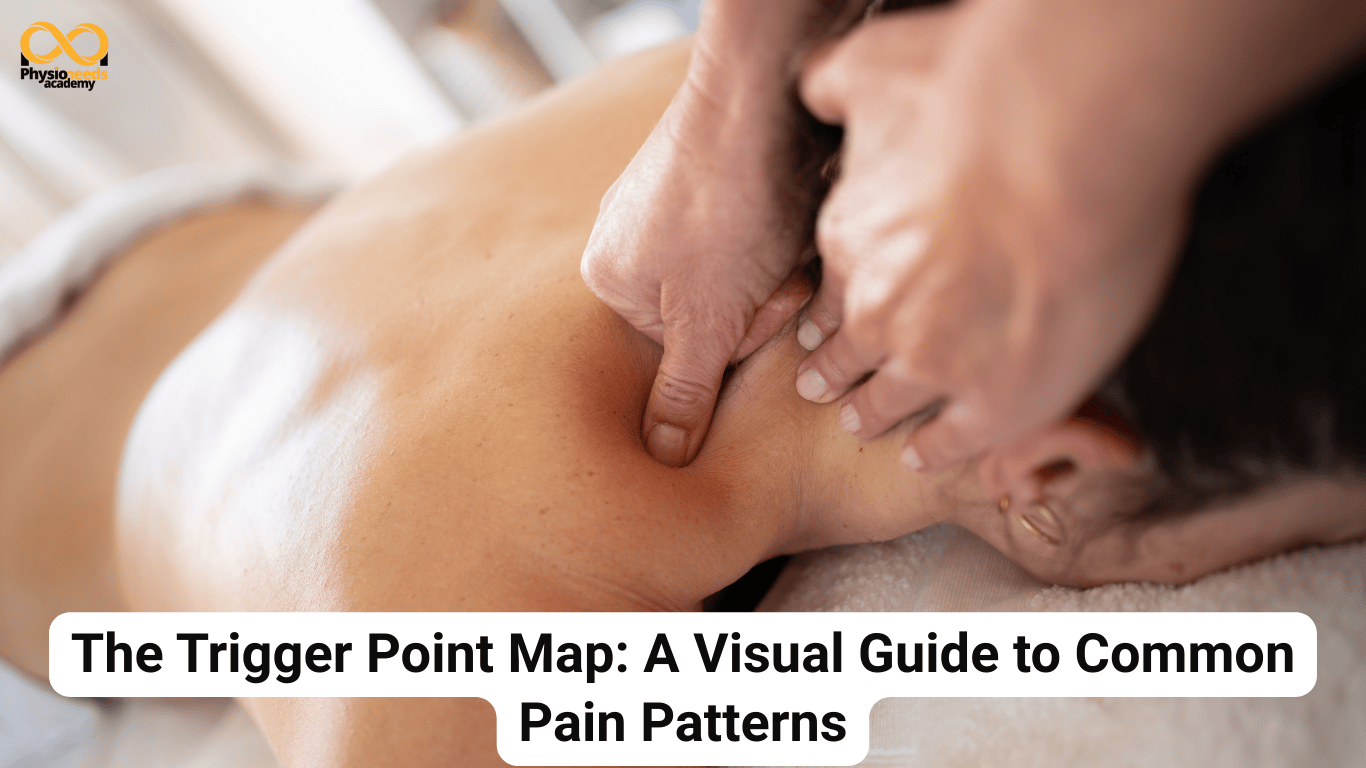There are no items in your cart
Add More
Add More
| Item Details | Price | ||
|---|---|---|---|

Have you ever felt pain in one part of your body, only to learn the real source was somewhere completely different? That’s the mystery of trigger points—tiny muscle knots that can cause pain in distant areas of the body. For physiotherapists, students, and rehabilitation specialists, a trigger point map is like a roadmap to understanding these pain patterns.
Today, we’ll break down what trigger point maps are, why they matter, and how they’re used in education and clinical practice. We’ll also explore how learning from a trigger point therapy course or pursuing a trigger point certification can give professionals a deeper edge in treating musculoskeletal pain.
Trigger points are small, irritable spots within tight muscle fibers. They form due to stress, overuse, or injury and often cause referred pain—discomfort in an area far away from the actual knot.
A trigger point map is a visual guide showing where trigger points are most likely to form and where their referred pain is commonly felt. For physiotherapy students, these maps simplify complex anatomy. For clinicians, they provide a quick reference during patient assessment.
And for patients, they offer clarity on why pain seems “mysterious” or difficult to diagnose. In advanced training, like a myofascial trigger point therapy course, these maps are central to understanding how to assess and treat pain efficiently.
1. Neck and Shoulder Pain
Trigger point maps help:
Trigger point maps are not treatment in themselves, but they guide the therapist toward effective techniques such as:
For physiotherapy students and professionals, trigger point maps are foundational. But learning how to apply them effectively requires structured education.
Consider a patient with recurring headaches. Despite multiple tests, no cause is found. Using a trigger point map, a physiotherapist identifies trapezius trigger points as the source. With a mix of dry needling, manual therapy, and corrective exercises, the headaches gradually disappear.
This simple example shows why trigger point therapy certification is not just about technical knowledge—it’s about improving lives through accurate pain mapping and treatment.
The trigger point map is an essential tool for understanding pain patterns, diagnosing root causes, and delivering effective treatment. For physiotherapists, students, and rehabilitation experts, mastering these maps through a trigger point therapy course or pursuing trigger point certification provides both confidence and credibility in practice.
By bridging anatomy and patient experience, trigger point maps remind us that pain is not always what it seems—but with the right training, its source can be uncovered and treated effectively.
Q1. Are trigger point maps the same for everyone?
Not exactly. While maps show common patterns, variations exist based on posture, lifestyle, and activity.
Q2. Do I need certification to use trigger point maps in practice?
Yes, if you want to practice professionally. A trigger point therapy certification ensures safe, evidence-based application.
Q3. Can patients use trigger point maps for self-care?
Yes, with guidance. Foam rolling and stretching can help, but professional assessment is best for chronic issues.
Q4. Which courses cover trigger point therapy?
Look for physiotherapy certifications, myofascial release courses, or specialized trigger point therapy training programs.
Q5. Are trigger points permanent?
No. With treatment and preventive exercises, they can be resolved, though lifestyle habits may cause recurrence.